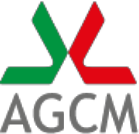IC50 - Investigation into human vaccines: "A more transparent market on drug costs and prices"
PRESS RELEASE
PRESS RELEASE
INVESTIGATION INTO HUMAN VACCINES: "A MORE TRANSPARENT MARKET ON DRUG COSTS AND PRICES"
An annual expenditure of 300 million Euros, at the National Health System’s expense, bound to double with the approval of the new vaccine prevention plan; an over 20 billion Euro global market, dominated by the oligopoly of four multinationals; serious lack of information on product costs and prices; the need of unequivocal and transparent medical choices, also to direct demand correctly.
The ICA’s investigation into the “Human vaccines market” - in particular vaccines considered essential because qualified as mandatory or recommended by national plans – has put this delicate market under the spotlight. In fact, the ICA, headed by Giovanni Pitruzzella, identified various competition criticalities: several ascribable to the more general structure of the vaccine industry and especially of the pharmaceutical sector in its whole, others distinctive of the Italian situation.
As regards the general issues, the investigation ascertained the existence of an oligopoly strongly concentrated at global level, with four multinational companies – GlaxoSmithKline, Sanofi Pasteur, MerckSharpDohme and Pfizer – holding more than 80% in value of the total amount of sales of vaccines in a sector with a total turnover in strong increase for years, currently amounting to more than 20 billion Euros. This trend mostly depends on the development of innovative products characterized by much higher prices compared to the traditional ones and covered by particularly complex patent exclusivities. This hinders the development of generic vaccines, even more than in other pharmaceutical markets. Therefore, product differentiation - which allows the substitution among products preventing the same disease – becomes more difficult.
The main operators’ commercial policies (in particular tiered pricing, to which non-disclosure agreements are often added concerning the prices applied) make it difficult for purchase centres to define purchases adequately. In the common view, however, vaccines continue to be considered traditional, economic and easily available drugs. In order to overcome the mentioned competitive criticalities, the ICA highlighted the need for aimed interventions – indicated precisely in its related study – to be adopted and shared at international level.
With specific reference to Italy, the ICA analyzed the supply and demand dynamics of essential vaccines in 2010-2015, when the National Health System spent in average 300 million Euros a year for these products. With reference to said dynamics, the ICA acknowledged positively the current procedure of grouping the public demand around a limited number of purchase centres, considering it fit to countervail buyer power. According to the ICA’s opinion, though, the information provided needs to be more transparent, starting from making the data concerning the awarding of the calls for tenders more easily available, due to their elaboration for benchmark assessments, besides good administrative practices.
More in detail, the investigation highlighted the positive effects of competition on price trends in consumers’ interest. In fact, commercial comparison among products produces a sensitive drop in prices, also in the absence of the so-called generic versions. Emblematic related cases are those of vaccines against papillomavirus and hexavalent vaccines - respectively the third and second expenditure item at the National Health System’s expense (23 and 75 million Euros) – for which it was possible to identify a direct competition between the drugs produced by GlaxoSmithKline (Cervarix and Infanrix Hexa) and Sanofi-MerckSharpDohme (Gardasil and Hexyon).
In the case of pneumococcal vaccines - the first item of the public vaccine expenditure (84 million Euros) – the ICA’s investigations found the absolute prevalence of Pfizer’s Prevenar13, preferred by contracting companies since it offers a vaccination coverage for more serotype strains compared to its competing product, that is GlaxoSmithKline’s Synflorix. In the absence of official decisions on the possible medical equivalence of vaccines with different serotype coverages (on which the commercial interchangeability depends), a lasting monopoly of the product was identified which increased prices during the years, even against the increasing and guaranteed sale volumes as regards the National Health System.
Therefore, according to the ICA’s opinion, the cognizant medical authorities need to adopt clear, transparent and independent positions, as regards both the inclusion of a specific vaccination in the national prevention plans and consequent essential levels of assistance, and profiles of medical equivalence among vaccine products. To allow a supply and demand countervailing, the ICA suggests to include vaccines in refund classes that subject prices to a preventive negotiation with AIFA for products which, after being registered in full price classes, are included in the national vaccination plans. This would guarantee continuous purchases of great volumes and possilbe discounts-quality assessments.
Rome, 25 May 2016

